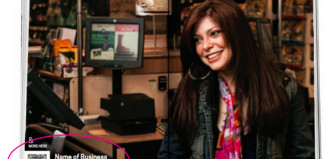I am here to defend pleasure. At the same time, I want to protect complexity. As with art, I am not interested in what is accepted. I admit it. I am a devotee of purity, creativity and uncompromised quality in all things, but especially in wine, beer and spirits. I want something authentic.
The act of eating and drinking is perhaps the greatest opportunity for us to exercise our values and choose authenticity. In talking about authenticity, it is useful to remember that there is a real cost to what we choose. Currency, whether it’s money or some other good or service, is what we give in exchange for the act of eating and drinking. And what it comes down to is what we are willing to pay for goods and their true cost: the energy, time, land, labor, water, fossil fuels and creativity it took to make these goods, as well as how they are consumed.
This is not only a question of sus tainability; this is a question of taste. It’s about being able to make a choice that honors the hedonist in you – the one that won’t sacrifice quality and respects the desire for the best flavors, sensations and experiences, and the steward in you – the one who recognizes the opportunity to choose something that is truly authentic.
Another caveat: In our world, we often blur the line between truly authentic goods and those deemed “luxury” goods. Historically, luxury goods as a category include jewelry, beauty products, fashion, and wine and spirits. With luxury goods, the amount of money you are required to exchange in order to acquire them is very high because of limited quantity (truly rare, or perceived/manufactured demand), specialized manufacturing or technology (only a few in the world have the know-how to offer this good or service), limited supply of raw materials and superior craftsmanship.
Often, it is common for goods to be marketed so that a well-made product is given inventive labeling, celebrity association and expensive merchandising in an attempt to make it a luxury good. These are not the kinds of artisan goods to which I refer. What I am talking about are truly authentic goods.
Authentic often means “artisanal,” but not always. It can also mean “natural,” but not always. For me, authenticity comes when a wine or spirit is natural and artisanal, and singular in quality. What these words indicate bears uncovering. “Natural” is a tricky word, especially in the world of wine and spirits. Often, it is associated with words like green, biodiversity, organic, local, pesticide-free, biodynamic, traditional, non-industrial, sustainable, indigenous and fair-trade. But what does “natural” really mean? Why does it matter? When is it more than an adjective in the modern green marketplace? When does “natural” actually mean natural? And where do we find the wines and spirits that are not only delicious, but also authentic and worth choosing? How do we differentiate when artificial ingredients or chemically derived products are allowed to be labeled “natural?”
It is such a multifaceted topic that has so many diverging trails that starting this conversation is like delving in to a choose-your-own-adventure book. But there are some things to consider:
▪ Just because a label says “natural flavors” doesn’t mean the flavors came from nature. The FDA allows anything that currently exists in nature – even if it was synthesized in a lab – to be labeled as having “natural flavors.” So, if you want to know for sure, you’ve got to ask.
▪ The complexity and benefit achieved by sourcing real botanicals for wine, beer and spirits cannot be compared to synthetic copies. This is why cocktails started as medicinal tinctures with brandy or cognac as the base, and with roots, barks and herbs added for healing tonics and flavor. Consider real vanilla, the second-most complex agricultural product we currently know of, next to coffee. Real vanilla has more than 400 “lines” of different components in its flavor spectrum, while Vanillin, the synthesized alternative, has only 10. Scientists are good at finding the requisite components in the spectrum that subjectively remind us of the thing being synthetically reproduced, but these cannot achieve the diversity present in nature. Let’s face it – Mother Nature has the real goods.
▪ I am not advocating for or against GMOs (genetically modified organisms). There may be an appropriate place for this technology in helping us find disease-resistant properties that could strengthen our crops. But we should be aware of our need for heirloom varietals, seed banks and the protection of indigenous species, especially in grapes, fruit and grain species – the building blocks of the wine and spirits world. It is important that GMOs are not used by modern food-and-beverage companies to patent seeds that are engineered to die out and then must be repurchased from these companies as a commodity. Additionally, this process can lead to seeds that mix through natural pollination with other non-patented seeds, then becoming the property of these firms alone.
• “Sustainable” is a much more workable term than “organic” and “biodynamic” when it comes to rethinking the wine and spirits world. There are many vineyards, farmers, distillers and botanical suppliers that work in a sustainable manner without being completely organic or biodynamic, and that is a holistic change we need to support with our pocketbooks.
• Artisan spirits need consumer support. Ninety-five percent of the spirits on the market are made using artificial processes. Why are flavored vodkas clear? Because there’s no real fruit in them. Why are many inexpensive tequilas and rums very dark? Because caramel coloring from corn syrup is cheaper than barrel aging. Why are there some mass-marketed products that are too inexpensive to be as deep, dark and luscious as they appear? Because firms add “super purple,” a manufactured anthocyanin that adds color.


































